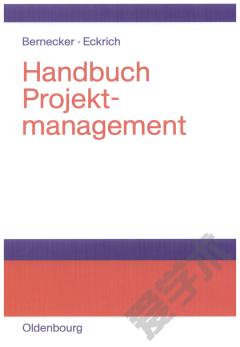Applied Software Risk Management —— A Guide for Software Project Managers
----- 应用软件风险管理:软件项目经理指南
RISK CULTURE Risk Thinking What Is Risk? A Boundary Problem Expressing Risk: The Basic Terms Risk Vocabulary Risk-Driven Project Management Controlling the Process, Environment, and Risk Maturity in Risk Culture Risk Scale Preparing for Risk RISK MANAGEMENT PROCESS What Is Risk Management? Risk Management Paradigms Is There a Process? In Real Life Five Models for Risk Management Model 1: The Organic Risk Management Process Model 2: Goal Selection Thinking about Less Risky Alternatives Model 3: Minimum Risk Management Model 4: Medium-Scale Risk Management Model 5: IAMT Cycle Model 6: Full-Scale Risk Management Risk Management at Different Levels Risk Escalation RISK ATTRIBUTES Risk Classification Risk Attributes Risk Origin Screening the Risks Three P's Risk Severity SEI Risk Taxonomy Risk Levels Time Element Affected Process Areas Affected Key Result Areas (KRA) Affected Goals Affected Requirements Risk Name Who Will Assign the Attributes? RISK IDENTIFICATION The Meaning of Risk Identification Risk Identification Methods Levels in Identification Identifying Product Risks Implementing Risk Identification Processes RISK ANALYSIS Scope and Purpose of Risk Analysis First-Order Analysis Useful Risk Distribution Analysis Seeing the Larger Picture Risk Levels and Analysis Effort Ownerless Risks Putting Together the Preliminary Analyses The Analysis Report More Analysis How to Implement Analysis RESPONDING TO RISK Getting Started Special Treatment for Catastrophic Risks The Constraint Risks Responding to Ordinary Threats A Comparison of Two Levels of Response Risk Response Plans Risk Avoidance Risk Transfer Risk Acceptance Risk Monitoring Risk Mitigation Contingency Plans Strategic Plan Risk Escalation Implementing Risk Response RISK TRACKING What Do We Track in Risks? A Moving Target Tracking Risk Response Plans Tracking the Bigger Response: Audits Tracking Hazard Risks Trigger Levels Tracking Project Risks Tracking Operational Risks Tracking Enterprise Risks Learning by Tracking Risk Tracker Tool The Hardening of Risks Implementing Risk Tracking RISK MODELS Why Models? Simple Risk Models Implementing Risk Models RISK INTELLIGENCE Natural Warning Systems Metrics Models Earned Value Model Estimation Model Requirement Model Critical Path Model WBS Model PERT Model of Risk Implementing Risk Intelligence FEED FORWARD Beyond Risk Reports Passing Knowledge Forward Risk Communication: The Critical Need Ten Barriers to Risk Communication Risk Dashboard Analytical Views Use of Models The Tool Risk Closure Report Better Than SPC Incorporating FFL in Risk Management INTEGRATED RISK MANAGEMENT Economy Drive The Visible and the Invisible The Positive and the Negative Program-Level Integration Strategic Business Unit (SBU)-Level Integration Enterprise-Level Integration Integrated Plans Integrated Risk Management: An Agile Process How to Establish Integrated Risk Management RISK MANAGEMENT: DRAFT PROCEDURES Can There Be a Procedure? The Risk Arena Symptoms of Not Having a Formal Risk Management Procedure The Anatomy of a Risk Management Procedure For Whom? Implementing the Procedures Procedure 1: Risk Management at Project and Operations Level Procedure 2: Enterprise Risk Management APPENDIX A: CAPER JONES'S RISK APPENDIX B: REX BLACK'S QUALITY RISK LIST APPENDIX C: SEI RISK TAXONOMY APPENDIX D: TOP N SOFTWARE RISKS APPENDIX E: PMI, RISK MANAGEMENT PROCESS APPENDIX F: IRM, RISK MANAGEMENT STANDARD APPENDIX G: CONTINUOUS RISK MANAGEMENT (CRM) PARADIGM APPENDIX H: BARRY BOEHM'S RISK MANAGEMENT PROCESS APPENDIX I: RISK MANAGEMENT IN CMMI APPENDIX J: REQUIREMENT RISK VERSUS MEASURABLE QUALITY ATTRIBUTES APPENDIX K: DIARY OF A RISK MANAGER RISK GLOSSARY REFERENCES INDEX
{{comment.content}}








 京公网安备 11010802027623号
京公网安备 11010802027623号